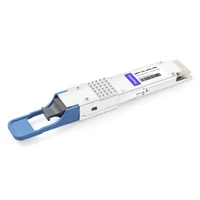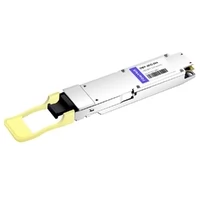The evolution of optical transceiver technology has been a major factor in fulfilling the increasing demand for data transfer rates and capacity in contemporary networks. 400GBASE-DR4 transceiver is one of the latest examples of such a technology, which is developed specifically to allow faster data communication via single-mode fiber optic links. This analysis focuses on the major operational aspects of the 400GBASE-DR4 transceiver, such as its design, function, and the ways it is configured. Within the context of standard and application requirements, this work will improve the comprehension of how this type of transceiver may be incorporated in certain types of network configuration and performance optimization. As the world of business and data centers shifts to a stage where they need effective and dependable links, the ability of 400GBASE-DR4 transceivers to be handled and installed properly by network engineers and IT specialists is crucial in this time of fast technology change.
Table of Contents
ToggleWhat is a 400gbase-dr4 Transceiver and How Does it Work?
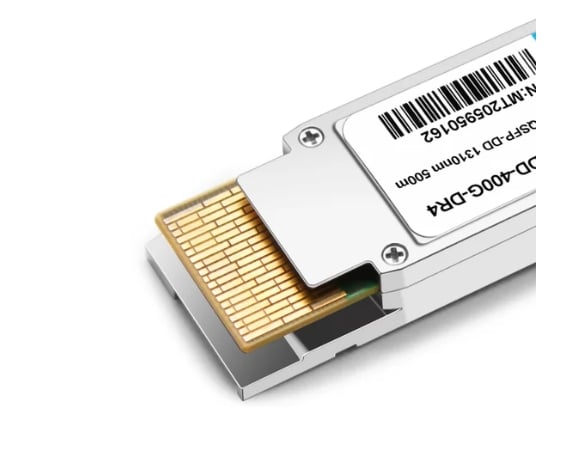
The 400GBASE-DR4 transceiver is an optical transceiver module that has been designed for high-speed data transmission over single-mode fibers over distances of up to 500m. This module supports the PAM4 signaling method, which effectively permits the transfer of data at a rate of 400 Gbps through the use of four 100 Gbps channels. The transceiver is generally designed in a QSFP-DD (Quad Small Form Factor Pluggable Double Density) package, which is a space-friendly solution for contemporary data centers. All four channels within the 400GBASE-DR4 transceiver are fed data that is compliant with OSFP wavelength standards to ensure compatibility with networking devices’ interoperability.
Understanding the Basics of Transceiver Technology
The network can successfully transmit data across its devices because transceiver technology is integrated into the system. Simply put, a transceiver integrates transmission and reception into a single unit, thus two-way access over a fiber optic cable is practicable. High-speed 400GBASE-DR4 Linear transceivers are specifically designed to comply with industry regulations such as IEEE 802.3bs, which are advantageous as foreshortened standards promote interoperability and performance of the network in question. This is achieved through PAM4 modulation, which enhances data transmission over and above the NRZ form of encoding, while the use of the QSFP-DD form factor allows for effective utilization of space in a highly packed networking environment.
Exploring the 400gbase-dr4 QSFP-DD Standard
The new 400GBASE-DR4 QSFP-DD standard has been focused on offering high speed in modern data centers, and it allows 400 Gbps maximum distance transmission. The connection is able to reach up to 500 meters because a single mode fiber (SMF) is used. The 8 electrical lanes are combined into 4 optics lanes, where each lane has the ability to accept 100 Gbps while employing complicated PAM4 mode to enhance the throughput of the data and employ proper usage of the spectrum.
40GBASE-DR4 QSFP-DD has been built to comply with stringent and proper compliance standards such as IEEE 802.3bs and OSFP, which makes sure it is able to connect with other systems without problems. More efficient in high-density applications due to consuming 12 watts or less because of the reduced transceiver power consumption.
A bigger port density is preferred for enhancing the network capacity because it does not need a lot of area, and this, in turn, is why the QSFP-DD form factor, which is double density, is preferred. Now, this standard is able to offer enhanced reliability due to having some built-in digital diagnostic monitoring (DDM) providing real-time updates of critical parameters, for example, temperature, voltage, and optical parameters, which are essential for maintaining the convenience of the network.
In brief, the 400GBASE-DR4 QSFP-DD standard represents the synergy of cutting-edge optical technologies aimed at delivering high performance, scalable and efficient broadband connectivity solutions for the future data center designs.
Key Features of Optical Transceivers
- High Data Rates: With the use of PAM4 modulation, optical transceivers such as the 400GBASE-DR4 QSFP-DD are able to meet broad data needs, easily reaching a maximum of 400 Gigabits per second.
- Low Power Consumption: However, due to their low energy requirements which range within 12 watts and below, these devices are able to suffice energy demanding applications all while being cost effective.
- Extended Reach: At distances of up to 500 meters, single-mode fibers are increasingly proving valuable in the construction of massive data centers and campuses as well as the 400GBASE-DR4 which has turned out capable of achieving data transmission elongations.
- Compliance Frame Work: Compatibility and interoperability with other networks is achieved by ensuring compliance with industry standards such as IEEE802.3bs and OSFP.
- Advanced Digital techniques: Even in the case that there are tight spectral constraints, PAM4 modulation allows one to achieve constrained usage by significantly enhancing bandwidth efficiency.
- Enhanced Port Density: Substantial growth in network density is made possible as a result of extended support for higher port densities through the QSDP-DD form factor.
- Operational areas: Employing Digital Diagnostic Monitoring (DDM) features, this device permits users to view and monitor the temperature, voltage, and the power levels of the device so as to ensure unyielding performance.
- Scalability: The successful evolution of the transceivers has played an important role in network evolution as they have allowed for data centers of the next generation by providing vivid room for data expansion.
How to Achieve Maximum Range with 500m SMF Optical Transceiver Module?
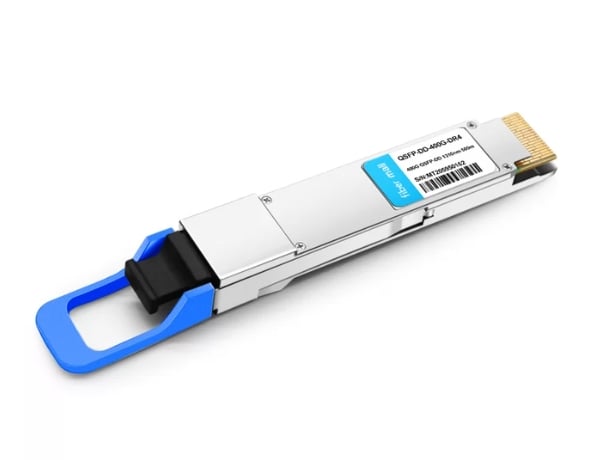
Optimizing Performance with PAM4
Due to the encoding of two bits per symbol, it is possible for PAM4, or Pulse Amplitude Modulation with four levels, to double the information density of every signal in relation to an ordinary NRZ (Non-Return to Zero). This diminishes the transmission bandwidth needed due to the distinct amplitude levels. For the best range from a 500m SMF Optical Transceiver Module, prioritize the grade and cleanness of the fiber, aim for low insertion loss, and properly align the components. Meeting these criteria guarantees signal integrity and provides reach extension which meets the rising need for data capacity while avoiding investments in extra fiber infrastructure.
Exploring the Use of 1310nm 500m Wavelengths
The 1310nm wavelength has an important role in the optical communication industry, especially for short and medium-range data transmission applications. Its use is due to its favorable characteristics like lower dispersion and attenuation compared to other most used wavelengths such as 1550nm. This particular wavelength is useful at distances of up to 500 meters, making it suitable for metropolitan area networks (MAN) as well as other applications of medium-range fiber optics.
Regarding the technical details, the wavelength of 1310nm has an attenuation coefficient of approximately 0.35 dB/km thus allowing transmission of signals while minimizing loss over short distances of fiber. It also has low chromatic dispersion in the standard single-mode fiber, thereby improving the quality and data integrity of the signal across its transmission. Using modules developed for this wavelength also enhances the possible exploitation of these characteristics, thereby improving network connectivity. Therefore, the application of 1310nm 500m solutions lends itself to the appropriate operations of the network and correlates with the increased demand for data in an effective manner.
Understanding the 400gbase-dr4 QSFP-DD PAM4 1310nm 500m Connectivity
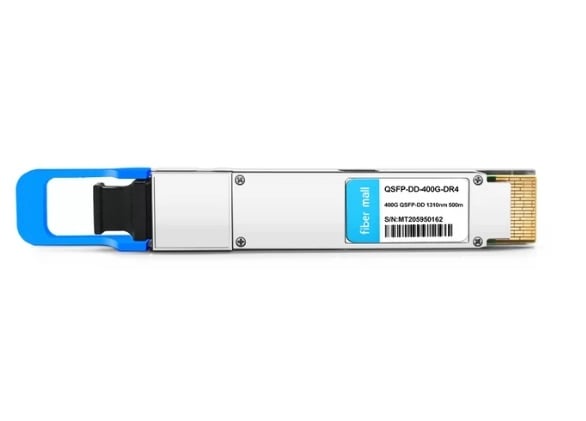
The Role of PAM4 1310nm 500m in Data Center Applications
PAM4 1310nm 500m technology is fundamental to increasing the efficiency and performance of a data center. This technology employs four-level pulse amplitude modulation (PAM4), which is known to have a data rate double that of traditional non-return-to-zero (NRZ) modulation. Thus resulting in the use of greater bandwidth at the same spectral range. This is important in enabling the ever-increasing requests of the user bases seen in modern cloud computing and large-scale data processing settings. The 1310nm wavelength, which possesses a comparatively lower relentless ratio and attenuation, allows stable high-speed transmission to the order of 500 meters. This distance is ideal for intra-data center communication links. Its adoption has been recommended by Google and other major technology companies because of its ability to enhance the performance of networks while consuming less energy and saving on costs, which is in tandem with efforts to create greener and more robust digital infrastructures.
Implementing MPO-12 for Effective Data Management
The use of MPO-12 connectors is essential for effective control over high-density fiber optic networks. As some sources on the Internet indicate, MPO-12 facilitates data management effectively as it combines several fibers into a single connector, which simplifies the cabling infrastructure. This minimizes installation and simplifies expandability, which allows for increasing network capacity with minimal reconstruction work. In addition, the existing standards of networks compatible with the MPO-12 make the implementation of such networks, together with their high-speed data transmission and maintenance, very easy. Given that organizations require quicker and more dependable means of processing data, MPO-12 offers the appropriate capacity and bandwidth necessary for the successful implementation of large and complicated operations.
What Makes a Compatible 400gbase-dr4 Setup?
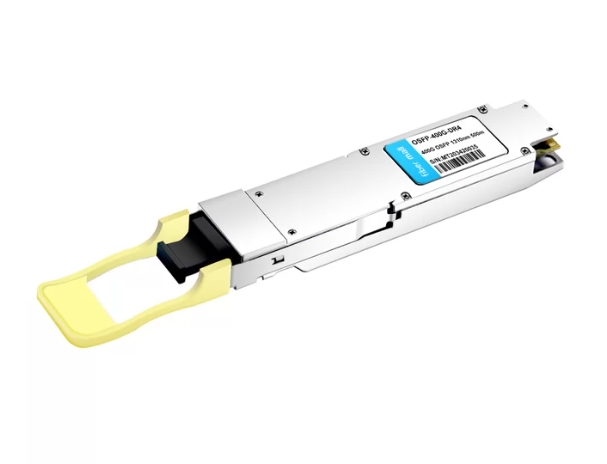
Ensuring Compatibility with Cisco and Other Brands
The principles of form factors and the coding of the transceivers must be fulfilled in compliance with Cisco and other brands with regard to the 400GBASE-DR4 setup. It is advised that QSFP-DD (Quad Small Form Factor Pluggable Double Density) transceivers be employed for enhanced interoperability with a number of other brands. It is necessary to update both software and firmware, ensuring they correspond to the updates made by the manufacturers recently. Also, consult with the most recent Google solutions about networking in order to ensure that the installation complies with the best interoperability norms of the network, facilitating great performance and integration within other networks.
Selecting the Right Generic Compatible 400gbase-dr4 Transceiver
The task of purchasing a generic compatible 400GBASE-DR4 transceiver is not an easy one as it has several requirements which need proper consideration. First, the transceiver must be equipped with a QSFP-DD interface as this aspect is essential for interoperability with a wide range of networking devices. The latest information from networking websites indicates that it is important to check the transceiver specifications, such as data rate and distance performance, to ensure they meet your network requirements. Secondly, such transceivers should have developed and implemented embedded software and error correction coding support to ensure that the transmitted data is surely reliable. You may also want to look for vendors known to provide good quality and customer service so that there is smooth performance and consistency in integration within your network systems.
Overcoming Common Compatibility Challenges
When seeking answers to typical 400GBASE-DR4 transceiver compatibility issues, recent information can shed light. A main concern constitutes the interfacing of the transceivers with the network hardware from other vendors. In this respect, solutions stress the need to choose transceivers that comply with the interoperability specifications, such as those defined in the MSA. Using compliant QSFP-DD transceivers neutralizes a number of problems associated with the inconsistencies of the connections.
In addition, compatibility is frequently compromised by the use of older software or firmware versions. It is best to have the latest version of the firmware installed in the devices from the very beginning. The inclusion of mechanisms for error correction coding is important for ensuring high data fidelity during fast transmission. Test coverage, as advocated by best practices in the industry, is an effective approach; it consists of parametric tests performed under varying conditions to determine compatibility within the various networks. There is no doubt that using these solutions will lower integration challenges and boost the performance of the network significantly.
How to Integrate OSFP with 400gbase-dr4?
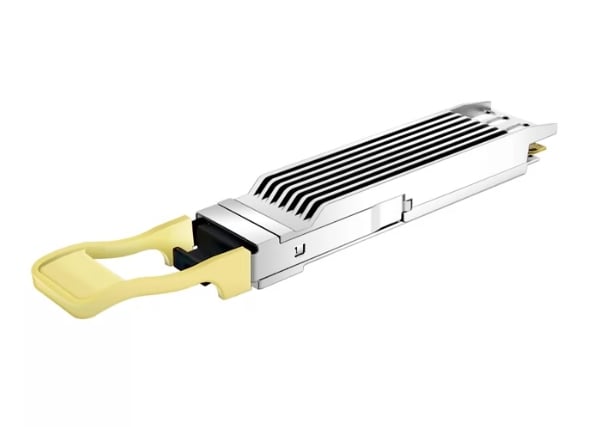
Exploring OSFP Capabilities with DR4 Transceivers
As it has been noted while studying OSFP ports with DR4 transceivers, the use of modulation techniques increases the data rate while lowering the latency. Such a process should entail a scheme that follows the normal standards in the industry to ensure compatibility. Taking into consideration their optimal power configurations with regard to structural settings. It is also important to put in place procedures that will assist in the automated testing of the system to rectify any issues associated with the integration of the system. These actions will ensure that OSFP modules with 400GBASE-DR4 transceivers are capable of working in an efficient and reliable high-capacity network.
Determining When to Use OSFP versus QSFP-DD
In regard to the use case scenario for OSFP and QSFP-DD, it is fair to say that a number of technical and operational considerations must be taken into account, which could determine the implementation of the OSFP. As per the information provided by some sources, both OSFP (Octal Small Form-factor Pluggable) and QSFP-DD (Quad Small Form-factor Pluggable Double Density) are able to deliver 400G capacity, but their selection seems to be based on different sets of criteria. OSFP modules are meant to be used in networks that have stringent thermal requirements and are expected to be deployed in new networks with advanced cooling and room for upgrades. On the other hand, the use of QSFP-DD is more suited in achieving backward compatibility and higher layer port density with existing QSFP infrastructure. Also, in instances where systems are dual-compatible with newer and older systems, there could be some cost-saving benefits in the use of the QSFP-DD modules. In the end, it would make sense to select an option that is in line with the desired architecture of the network in terms of the number of ports and power requirements as well as growth in the future.
Reference Sources
Frequently Asked Questions (FAQs)
Q: What is the role of a 400gbase-dr4 transceiver?
A: The 400gbase-dr4 transceiver’s application is within the 400 Gigabit Ethernet range, and as such, it is designed for the high-speed switching and routing of data. It is primarily deployed in data centers and telecommunication businesses to enhance long-range data transmission.
Q: How does reducing the number of levels in modulation from two to four (PAM4) modulation enhances the performance of the 400gbase-dr4 transceiver?
A: Enhanced signal transmission rates using the same frequency bandwidth is the main accomplishment due to PAM4 or four-level pulse amplitude modulation. It effectively doubles the transmission capacity compared to traditional binary modulation, which increases the functionality of the 400gbase-dr4 transceiver.
Q: What are the key features of the qsfp-dd pam4 1310nm 500m dom transceiver?
A: The qsfp-dd pam4 1310nm 500m dom transceiver is able to achieve an impressive data throughput of about 400Gbps, a distance of 500m with single-mode fibers, and it utilizes a PAM4 modulation schema. Its adoption, together with the qsfp-dd standard, has also brought greater flexibility in terms of network configurations.
Q: Can the new 400gbase-dr4 qsfp112 be installed alongside the already existing networks?
A: Yes, the 400gbase-dr4 qsfp112 can be a subnet in any current network. It’s flexible enough to work with all sorts of Ethernet networks, most of which are transitioning to newer technological networks.
Q: What connectors are typically used on the 400gbase-dr4 transceiver?
A: Data center applications tend to use the 400gbase-dr4 transceiver with Optical MPO connectors because they allow for high-density optical interconnections.
Q: What is the impact of APC connectors on the performance of the 400gbase-dr4 transceiver?
A: With the use of APC (Angled Physical Contact) connectors in 400gbase-dr4 transceiver applications, the level of signal quality is good due to reduced reflection and improved return loss.
Q: What are the benefits of using these qsfp-dd msa-compliant transceivers?
A: The use of QSFP-DD MSA-compliant transceivers enhances the interoperability of different vendors’ products in the networks, thus easing integration and upgrades without compromising performance outputs.
Q: Can the 400gbase-dr4 transceiver work with multimode fiber (MMF)?
A: Yes and No; the 400gbase-dr4 transceiver is specifically designed for single-mode fiber optic transmission; however, when using multicore fibers, the 400gbase-sr8 transceiver is preferred.
Q: What is the significance of the 1310 nm wavelength in the 400gbase-dr4 qsfp-dd optical transceiver?
A: The 1310 nm wavelength is most suited for single-mode fiber applications since it provides low dispersion and loss. Such a wavelength is able to improve the 400gbase-dr4 qsfp-dd optical transceiver’s performance and reliability when used at longer distances.

